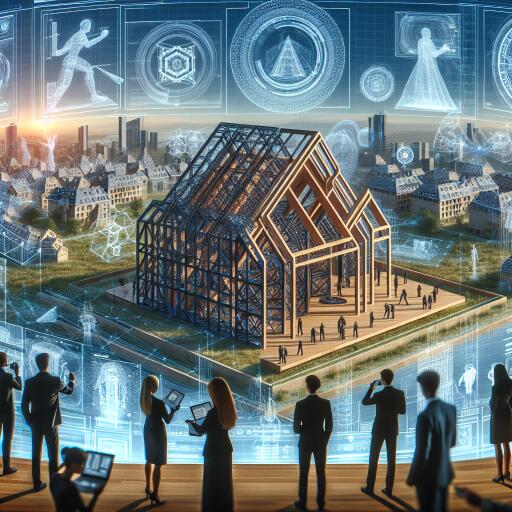AI-powered (R)Evolution: Advancing digital twins in the AEC/O industry
The architecture, engineering, construction, and operations (AEC/O) sector is on the brink of a monumental shift thanks to the evolution of digital twin technology. Far from being mere digital replicas of physical buildings or assets, today’s advanced digital twins are becoming an integral part of the AEC/O industry. These sophisticated models offer a comprehensive view of a project, combining real-time data, predictive analytics, and IoT integration to streamline decision-making and operations.
Yet, the adoption of digital twins has been slow, hindered by the daunting task of creating and integrating a functional twin into existing systems. The creation of a digital twin involves laboriously gathering and processing vast quantities of data from disparate sources, a task that has traditionally required considerable manual effort.
Fortunately, breakthroughs in artificial intelligence (AI) and machine learning (ML) technologies are poised to revolutionize this process, significantly reducing the barriers to entry. AI not only simplifies the creation and management of digital twins but also amplifies their capabilities, enabling more effective monitoring, predictive maintenance, and optimization than ever before.
Until now, the promise of digital twins in providing a comprehensive overview of a building’s performance has often been limited by the technology’s reactiveness rather than its predictiveness. While identifying issues became more straightforward, diagnosing and resolving these issues continued to rely on time-consuming manual analysis.
The game-changer comes with AI’s ability to parse historical and real-time data to not only predict maintenance needs but also prescribe solutions. This predictive capability extends the value of digital twins beyond simple diagnostics, enabling stakeholders to anticipate and mitigate issues before they escalate.
Moreover, AI-enhanced digital twins offer possibilities for more than just maintenance efficiency. They can facilitate remote inspections, reducing operational costs and improving efficiency. Lifecycle cost analyses can be enriched with AI insights, paving the way for cost optimization and enhanced sustainability measures.
On the sustainability front, AI-powered digital twins are innovating how the AEC/O industry approaches energy consumption and environmental impact. By harnessing IoT data, these twins can monitor energy usage in real-time. AI algorithms then analyze this data to uncover inefficiencies and propose targeted solutions, aligning with the global push towards sustainable building practices and operations.
Enhanced space utilization and improved occupant comfort are additional benefits. AI algorithms can analyze usage patterns to optimize building layouts, while environmental monitoring enables the twin to maintain ideal conditions for occupant health and productivity.
The convergence of AI with digital twin technology is erasing the barriers that have historically hindered wide-scale adoption in the AEC/O industry. This fusion promises a future where creating and leveraging digital twins are not only simplified but also more beneficial across the building lifecycle. The era of truly intelligent, efficient, and sustainable building management is upon us, marking a significant leap forward for the AEC/O industry.
As these technologies continue to integrate, the potential for digital twins to transform every facet of the AEC/O industry from cost management to environmental stewardship becomes ever more apparent. Such a comprehensive, data-driven makeover represents exactly what the sector needs to propel itself towards efficiency, sustainability, and growth in the years ahead.










